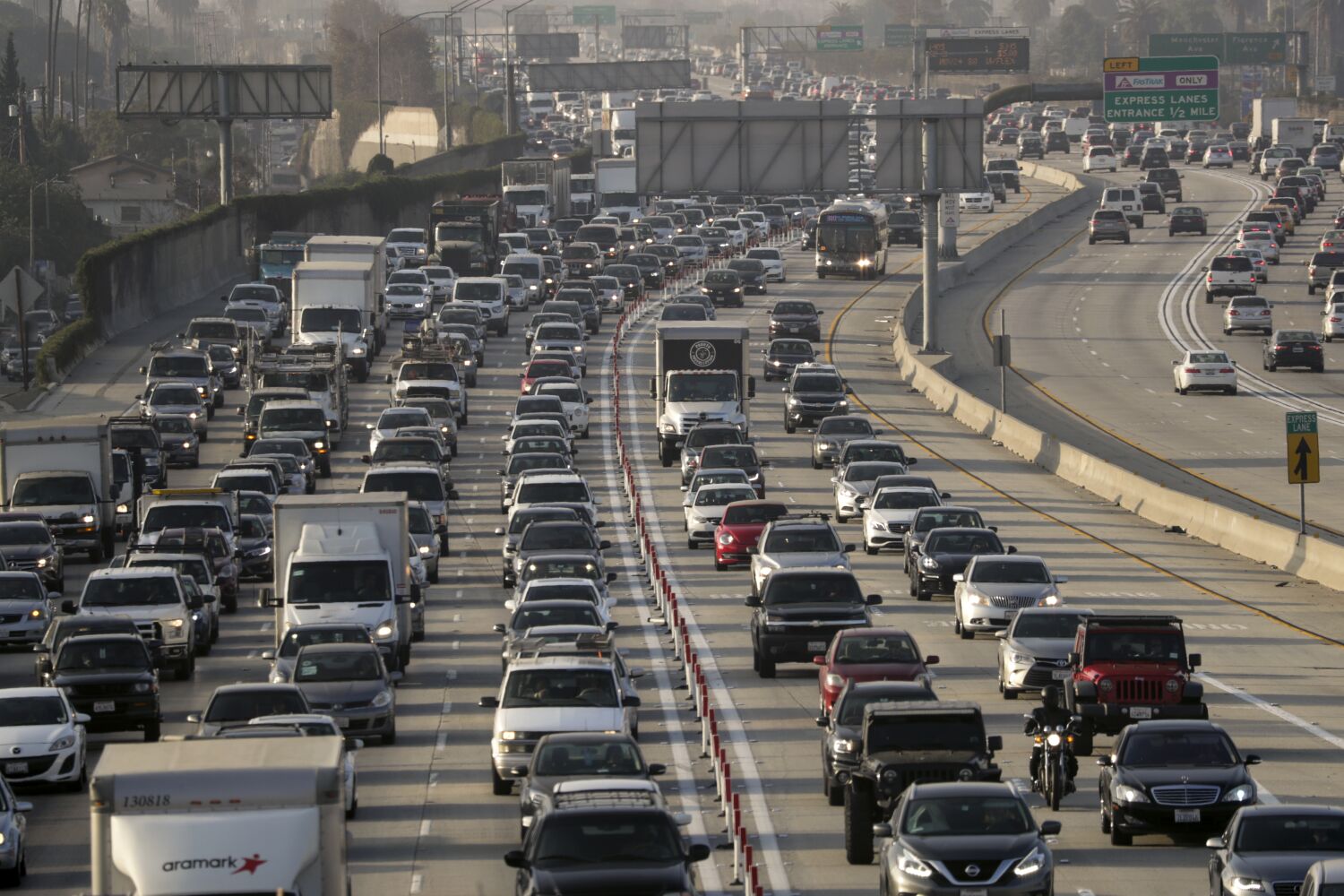This week the California Air Assets Board is predicted to approve what’s generally known as its 2022 Scoping Plan, the blueprint to make the state, the world’s fourth largest financial system, carbon impartial by 2045. The plan is past bold. “It’ll spur an financial transformation akin to the economic revolution,” Gov. Gavin Newsom declared when it was launched final month.
Decarbonizing within the subsequent 22 years will, in fact, require greater than a plan backed by daring statements. What would assistance is a plan that has been future-proofed. And that is the place California seems to have extra work to do.
CARB began with 4 pathways to carbon neutrality and chosen the one it deemed almost certainly to pan out beneath a fairly restricted set of assumptions. When the long run diverges from these assumptions, then what?
For example, the plan depends closely on capturing carbon from energy crops and the air and both utilizing it ultimately or “sequestering” it. However carbon seize expertise is probably not prepared, scalable and cost-effective shortly sufficient, as local weather specialists have identified. Likewise, the plan assumes Californians will drive much less, an assumption that runs counter to a long time of accelerating journey. Such points imply that the state’s decarbonization plan is brittle, vulnerable to failure beneath even modest stress or scrutiny.
Prices and advantages aren’t totally tallied both. The plan states that its impact on jobs and financial progress will likely be negligible. Cleaner air will produce “$199 billion of advantages within the type of diminished hospitalizations, bronchial asthma circumstances, and misplaced work and faculty days.”
A full accounting is important. As one instance, visitors congestion and highway fatalities price the state a mixed $33 billion a yr. Vital cuts to journey, in the event that they materialize, would decrease these prices however the plan doesn’t work out the potential financial savings. It acknowledges however doesn’t but quantify its impacts on different key points, together with water high quality, agriculture and forest assets, and recreation.
These weaknesses — unmanaged uncertainty and partial accounting — make the plan politically weak. It is going to be too straightforward to punch holes in it when new legal guidelines, rules and funding are wanted to implement its numerous components. Decarbonizing would require assist from state and native policymakers, industries, curiosity and advocacy teams, and residents of each political stripe. Many of those stakeholders, whereas sympathetic to local weather objectives, have their very own compelling priorities: regional financial progress, job safety, preventing poverty, sustaining farming or assuaging housing shortages. They’ll wish to know: How will this transformation have an effect on them? Can they depend on the air assets board’s evaluation?
Stress-testing CARB’s plan would deal with its uncertainty and accounting deficits. Though the state and analysis group have undertaken partial research for particular person sectors, there’s been no built-in stress take a look at of the entire plan.
A rigorous take a look at would take a look at 1000’s of doable futures, every constructing in several assumptions about inhabitants and financial progress charges; various demand for items, companies and journey; the price and availability of applied sciences; adjustments in vitality effectivity; the general public response to coverage adjustments; and local weather change results on pure assets. The outcomes may inform us what would possibly lead the state to overlook its emissions targets or lead to a future the place the prices of sure carbon-limiting actions outweigh the advantages. The state may then hedge towards these circumstances.
Right here’s how stress testing labored in Costa Rica, which developed its personal decarbonization plan in 2019. Like California’s, Costa Rica’s plan was bold, touched each a part of its financial system and confronted skepticism. However Costa Rica deployed subtle evaluation to consider its plan beneath 3,003 units of assumptions: an financial system booming or rising slowly, roughly demand for transportation, forests shrinking or thriving, and so forth. Their guiding query was, “Underneath what future circumstances will we not attain net-zero emissions by 2050, or will doing so price us greater than profit us?”
The bold evaluation confirmed that Costa Rica would meet, or nearly meet, its objective in additional than three-quarters of the futures they modeled. It achieved net-negative emissions in practically half of these futures. The evaluation additionally revealed {that a} key failure level turned on whether or not demand for fossil-fuel-based transportation went unchecked. That perception helped Costa Rica impress its efforts round modernizing city transport.
The researchers additional calculated that decarbonizing by 2050 would require up-front investments of round $37 billion, however it might additionally present $78 billion in financial savings and advantages — a 110% return, together with elevated crop yields, much less visitors congestion and fewer crashes on the streets of its capital, San José.
Costa Rica went on to construct a powerful coalition of inside assist — assuaging the troubles of many who have been reluctant to make huge change — and submitted the plan to the United Nations as demonstration of its dedication beneath the Paris local weather settlement.
California’s 2022 Scoping Plan states that it supplies “a method ahead and a imaginative and prescient” for addressing the results of greenhouse gasoline emissions together with air pollution, wildfires, excessive warmth and drought. “This plan,” the abstract concludes, “is essentially based mostly on hope.”
Decarbonization can’t relaxation on hope. The stakes are too excessive. The state wants and deserves a future-proofed, stress-tested plan that each one Californians can belief to attain its local weather objectives.
Nidhi Kalra is a senior info scientist on the Rand Corp. With the Inter-American Growth Financial institution, she is creating net-beneficial decarbonization pathways for each nation in Latin America.





